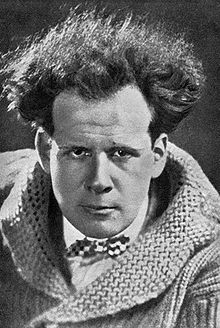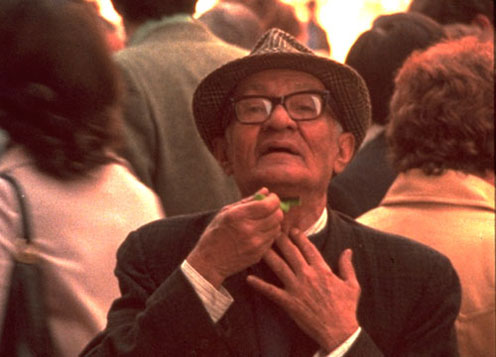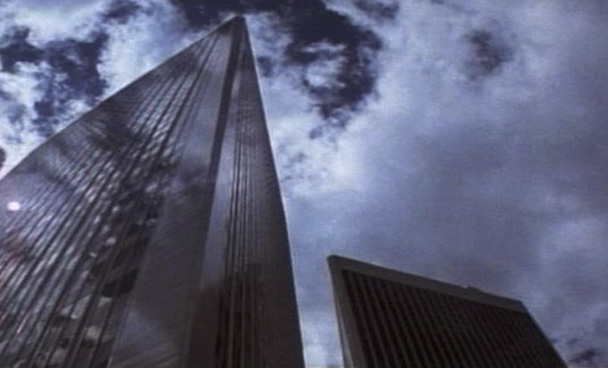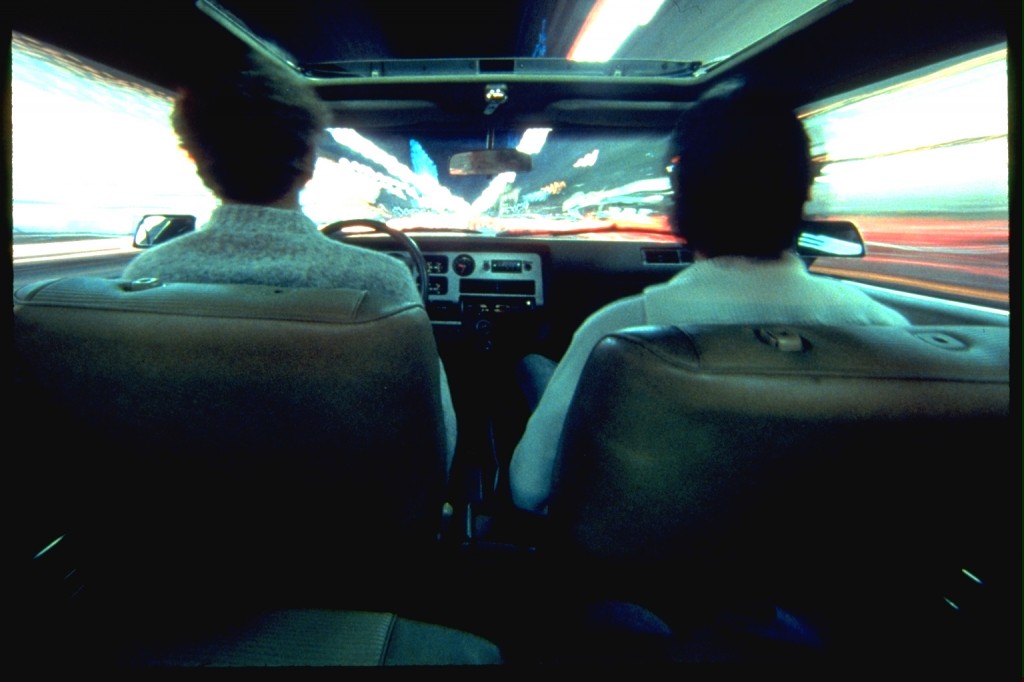 Koyaanisqatsi (1983)
Koyaanisqatsi (1983)
*** Burke Favorite ***
Dir: Godfrey Reggio, Prod: Francis Ford Coppola
You can’t pronounce it, I can’t pronounce it, but who cares?
I figured since this is my 101st post, we should do something a little avant guard, right? So, let’s talk about silent films for a moment. After all, that’s how the entire medium started. Being a proud film geek, I actually got the early Edison films from Netflix: there’s a great package of seven or eight discs with film historians discussing the significance of the films, many of which are shot behind a little warehouse. The warehouse was actually Edison’s building where he would host boxers, gymnasts and other folks who could do impressive, Olympic-type movements for the camera. The films are grainy and skip a bunch, but what you’re really watching is the infancy of an art medium – it’s really worth a watch! However, the thing about the films was they were simply tests. Just like any other scientist tests their new finding, Edison was testing the films and needed some subject matter to move in front of his camera. Sure, there was a simple piano score with most of the films I watched on this disc, but this was laid in much later for the DVD.
 Moving on to some of the Russian experiments with film, I can’t remember who it was (Eisenstein? Pudovkin?) that tested montage simply with a few assorted moving images. One of the films tested an audience member’s reaction to moving images like they were conducting the Pavlov’s dog test. Imagine an image of a crowd milling about, then a close up of a guy with no expression on his face. We go back to the crowed and other street scenes and then back to the guy and then suddenly to a bowl of something to eat. The cuts between regular life, the guy and the bowl of food continued for just a couple minutes before the experimenter asked the viewer what they thought. Many viewers thought the guy was hungry. Where am I going with this? We, as people, like to assign a story to images. Think of the last time you went to the museum and saw one of the French Impressionist’s scenes at a table or in a park: don’t you want to know what was going on between those people? Anyhow, the Russian experiment in montage demonstrated that certain images, assembled together might tell a story. I guess I’m just trying to give a little credit to the early film pioneers who actually developed ways of telling stories with moving images that we take for granted today? Sorry – didn’t intend for this post to go sideways with all this film history, here….
Moving on to some of the Russian experiments with film, I can’t remember who it was (Eisenstein? Pudovkin?) that tested montage simply with a few assorted moving images. One of the films tested an audience member’s reaction to moving images like they were conducting the Pavlov’s dog test. Imagine an image of a crowd milling about, then a close up of a guy with no expression on his face. We go back to the crowed and other street scenes and then back to the guy and then suddenly to a bowl of something to eat. The cuts between regular life, the guy and the bowl of food continued for just a couple minutes before the experimenter asked the viewer what they thought. Many viewers thought the guy was hungry. Where am I going with this? We, as people, like to assign a story to images. Think of the last time you went to the museum and saw one of the French Impressionist’s scenes at a table or in a park: don’t you want to know what was going on between those people? Anyhow, the Russian experiment in montage demonstrated that certain images, assembled together might tell a story. I guess I’m just trying to give a little credit to the early film pioneers who actually developed ways of telling stories with moving images that we take for granted today? Sorry – didn’t intend for this post to go sideways with all this film history, here….
 Anyhow, Godfrey Reggio’s Koyaanisqatsi is a demonstration of how powerful a bunch of moving images – along with an intense and intended film score – can actually be. There is no story, really; it’s just film art, if you will. Should you have the chance to see this movie, I really think it’ll show you how vast the cinema experience can vary. What I mean is, while the box office boils over this year with superheros and stories of heroine archers dismantling distopian futures, you might take the opportunity to watch a film like Koyaanisqatsi as counter-programming. I’m not saying The Avengers and The Hunger Games (amongst the other big hits of this year) are wrong in some way. I’m really not saying that at all! And for the record, I rather liked Hunger Games… But, I’ll bet you agree that Koyaanisqatsi, a film set to Philip Glass’ score, is kind of like heading to the museum for an afternoon.
Anyhow, Godfrey Reggio’s Koyaanisqatsi is a demonstration of how powerful a bunch of moving images – along with an intense and intended film score – can actually be. There is no story, really; it’s just film art, if you will. Should you have the chance to see this movie, I really think it’ll show you how vast the cinema experience can vary. What I mean is, while the box office boils over this year with superheros and stories of heroine archers dismantling distopian futures, you might take the opportunity to watch a film like Koyaanisqatsi as counter-programming. I’m not saying The Avengers and The Hunger Games (amongst the other big hits of this year) are wrong in some way. I’m really not saying that at all! And for the record, I rather liked Hunger Games… But, I’ll bet you agree that Koyaanisqatsi, a film set to Philip Glass’ score, is kind of like heading to the museum for an afternoon.
The film begins with various images of grandiose landscapes. From the Grand Canyon to the Badlands, deserts and oceans are all shot in long takes, majestic and phenomenally simple. Then, it’s as if the film is saying, “ruh roh – here comes Man.” A shot of an earth mover, another of a NASA rocket firing away and more of tall buildings in unrecognizable metropolises gave me the feeling that much of the film was going to be consumed with some sort of environmental message. But then, when I watched the piece in its entirety, I noticed that wasn’t really the case. For me at least, I saw a similarity in how the ocean’s water flowed and how the heatwaves on the tarmac ripple. I saw an almost uncanny relation between how the wind makes grooves in the desert and how there are other grooves in the sides of man-made buildings. There are other examples, but the imagery convinced me that there’s a certain comfort with how we humans have settled into our earthly environment.
The film’s title is from the Hopi language and loosely translated as, “Life out of balance.” So, the film maker is obviously making a statement with his melding of intense images and overwhelming score that we’re (people) making a negative effect on ol’ Mother Earth. However, I appreciate and insist that Reggio actually leaves it up to you the viewer to decide what the presentation means. If any of you have seen it, I’d love to get your take on the last scene with the rocket. I remembered that sequence specifically from the first time I saw the film: I remember it actually upset me. But, what I forgot is that the film cuts back to the first image, of the people drawn on the cave wall. I guess what I’m saying is, the film didn’t have the depressing end I thought it did.


